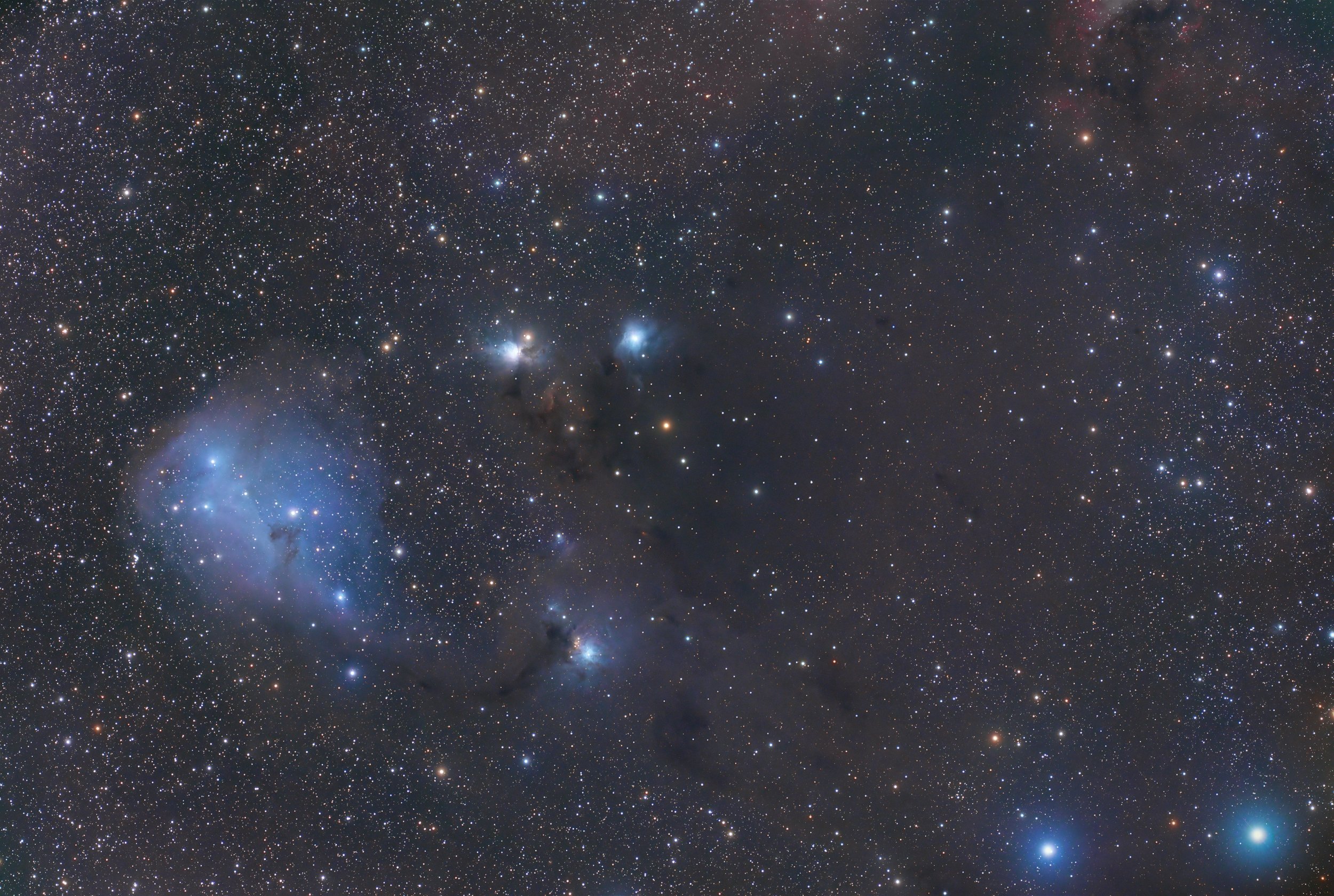
AAPOD2 Image Archives
Sh2-308 – The Dolphin Nebula
Sh2-308, also known as the Dolphin Nebula, is a large, faint emission nebula located in the constellation Canis Major, approximately 4,500 light-years away. This expansive bubble-shaped structure is formed by the strong stellar winds of the Wolf-Rayet star EZ Canis Majoris (EZ CMa), which is shedding its outer layers in the final stages of its evolution. The nebula's predominant oxygen emission gives it a characteristic bluish hue, contrasting against the surrounding interstellar medium.
Expanding at nearly 60 km/s, Sh2-308 spans over 60 light-years in diameter, making it one of the largest Wolf-Rayet bubbles known. Its tenuous gas shell, primarily composed of ionized oxygen, offers a glimpse into the late evolutionary stages of massive stars before they eventually explode as supernovae. Capturing this nebula requires long integration times and narrowband imaging, particularly in OIII, to reveal its faint and complex bubble-like structure.
NGC 2170
Image Description and Details :
NGC 2170, LRGB 300:300:300:300, total 20 hours
A dusty reflection nebula and stellar nursery that formed about 6 to 10 million years ago, located at the edge of the elliptically shaped, giant star-forming molecular cloud Monoceros R2 (Mon R2), some 2,700 light-years away in the constellation of Monoceros.
Telescope : Planewave CDK 17, Camera : SBIG STXL 11002 with AOX, Tracking : Paramount ME
Location : Observatorio El Sauce, Chile
Image processing software : Pixinsight, Photoshop
Copyright:
Image captured : Martin Pugh
Image processing : Rocco Sung
NGC 4753
Image Description and Details :
NGC 4753
L=460:R=360:G=330:B=360, total 25.2 hours
Telescope : Planewave CDK 17, Camera : SBIG STXL 11002 with AOX, Tracking : Paramount ME
Image capture : Martin Pugh
Image processing : Rocco Sung
Location : Observatorio El Sauce, Chile
Copyright: Rocco Sung & Martin Pugh
Cometary Globule CG12 & NGC 5367
Image Description and Details :
NGC 5367 is a reflection nebula associated with the cometary globule CG12 in the Centaurus constellation. Dicovered in 1976 on an ESO/SRC Sky Survey plate taken with the UK Schmidt telescope, CG12 is in contrast to the most other Cometary Globules, because it is far away from the galactic disk.The nebula NGC 5367 (also catalogued as IC 4347) reflects light from two bluish stars of the binary system h4636 (the stars are from spectral type B4 and B7).Location: El Sauce Observatory, Rio Hurtado, ChileDates of Capture July & August 2020L 23 x 1200secR 15 x 1200secG 15 x 1200secB 16 x 1200secOptics: Planewave 17“ CDK @ F6.8Mount: Paramount MECCD: SBIG STXL-11002 (AOX)Pre Processing: CCDstack & PixinsightPost Processing: Photoshop CC
Copyright Information:
Data acquisition: Martin PUGHProcessing: Nicolas ROLLAND
One-Armed Spiral Galaxy - NGC 4725
Image Description and Details :
While most spiral galaxies, including our own Milky Way, have two or more spiral arms, NGC 4725 has only one. Here, the solo spira mirabilis seems to wind from a prominent ring of bluish, newborn star clusters and red tinted star forming regions. The odd galaxy also sports obscuring dust lanes a yellowish central bar structure composed of an older population of stars. NGC 4725 is over 100 thousand light-years across and lies 41 million light-years away in the well-groomed constellation Coma Berenices. Computer simulations of the formation of single spiral arms suggest that they can be either leading or trailing arms with respect to a galaxy's overall rotation. Also included in the frame, sporting a noticably more traditional spiral galaxy look, is a more distant background galaxy (text taken from NASA APOD).
Martin first imaged NGC 4725 with a CDK17/Apogee U16M but later returned to add very high quality luminance acquired with the same scope but with an SBIG STXL11002 and adaptive optics. That result is shown here, but reassembled and reprocessed using new techniques developed in Adobe Photoshop.
Copyright: Martin Pugh
The dance of the Antennae Galaxies
Image Description and Details : This picture shows the Antennae galaxies (Caldwell 60-61), a pair of interacting spiral galaxies in the constellation Corvus. The blue hue represents a star forming regions.
Date image was taken: 3/8/2020
Scope: Planewave CDK17
CCD: SBIG STXL-11002
Mount: Paramount ME
Integration time: 27.1 hours
Filters: 22*1200s (L), 15*1200s (R); 15*1200s (G), 16*1200s (B), 9*1800s (Ha)
Location: Chile
Copyright Information: Data acquisition by Martin Pugh
Processing by Nicolas Rolland







